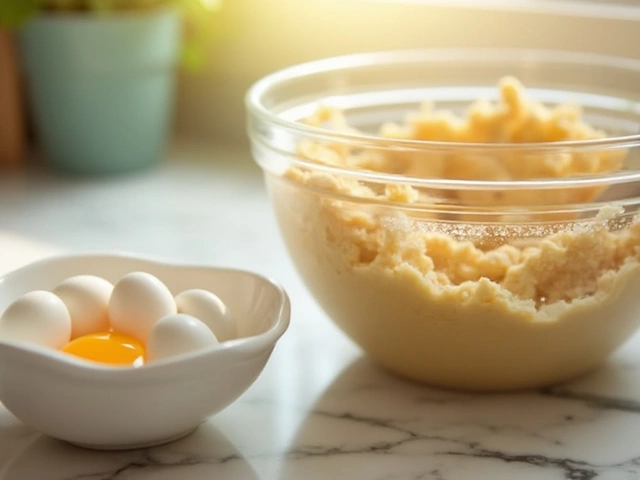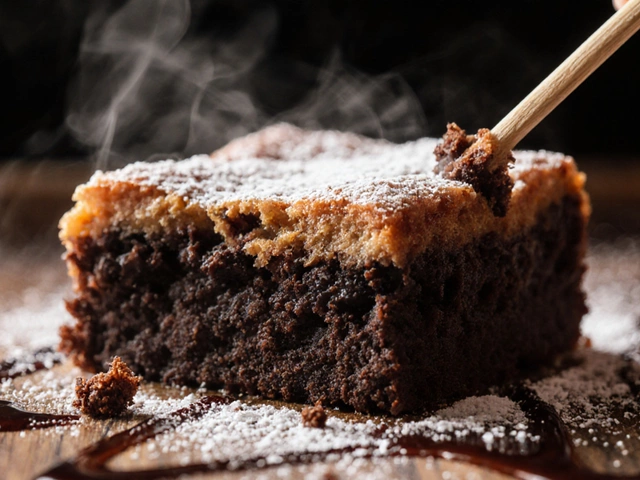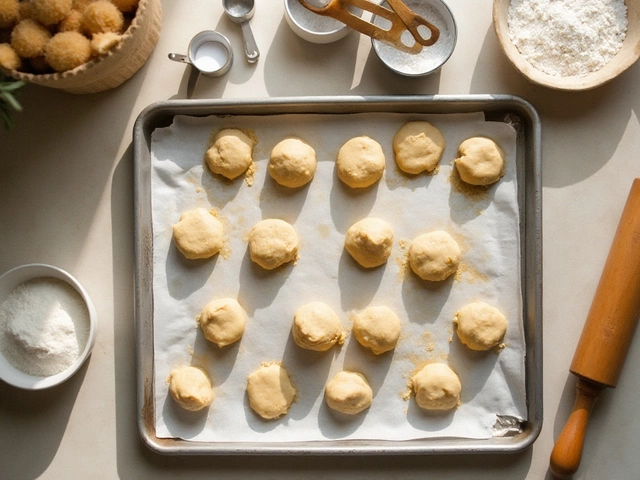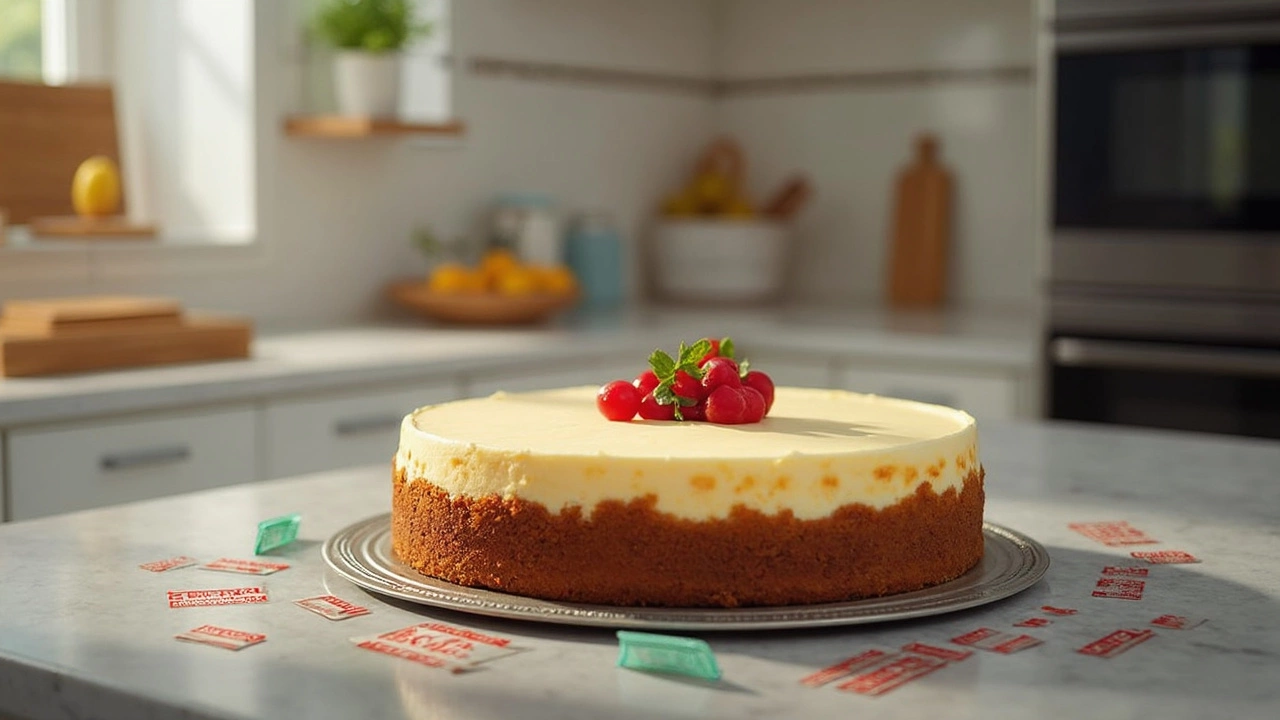
If you’re reaching for that creamy wedge of cheesecake, think twice—it isn’t always the best option for your body, your health, or even your happiness. Sound dramatic for a dessert? Trust me, there’s more to this story than a few calories. One dodgy bite can turn a celebration into a stomach disaster, and sometimes even a small amount can set off issues you weren’t expecting. The truth is, timing and awareness make all the difference between enjoying a slice and regretting it later. So let’s break down the real situations when putting that cheesecake back in the fridge (or the bin) is your best move.
Cheesecake and Food Safety: The Red Flags
Cheesecake is basically a playground for bacteria if not handled properly. It’s loaded with dairy—cream cheese, sour cream, and often eggs—all things that spoil fast if even slightly mistreated. That gorgeous slice sitting at room temperature during a summer garden party or staring at you from a bakery display after hours has some risks you need to respect.
Here’s what most people don’t realise: the creamy goodness makes cheesecake especially vulnerable to pathogens like Salmonella, Listeria, and Staphylococcus. A study in 2023 from the UK Food Standards Agency flagged cheesecakes left unrefrigerated for more than two hours as risk zones for rapid bacterial growth. If your cheesecake has been out at room temperature for a birthday, picnic, or potluck party and you can’t remember when it landed on the table, put down the fork. The two-hour rule really matters, especially in summer when temperatures shoot above 21°C (about 70°F).
Those little cracks on the surface or a dried-out edge? Sure, not all imperfections spell doom, but changes in texture and appearance are dead giveaways for spoilage. If your cheesecake has a funky or sour smell, it’s waving a red flag. Any visible mold—no matter how tiny—means toss the whole thing. Don’t even try to cut around it. Mould roots travel deep through soft foods, even if you can’t see them.
The same goes for that piece lingering in your fridge. Properly stored, freshly-made cheesecake will keep for about 3-5 days. Store-bought versions can last a little longer thanks to preservatives, but not forever. Always check the date and trust your senses.
Transporting a cheesecake? Never store it in direct sunlight or in a hot car. Use a cool bag with ice packs if you’re taking it to a friend’s house or a picnic. Foodborne illness isn’t a myth, and nobody wants to celebrate with food poisoning. Here’s a helpful table for reference:
| Temperature | Max Safe Time Left Out |
|---|---|
| Below 5°C (41°F) | Up to 5 Days (fridge) |
| Room Temp (21°C/70°F) | 2 Hours |
| Warm Weather (>30°C/86°F) | 1 Hour |
Notice off smells, weird colours, or an oozy texture? That’s your sign to walk away, no matter how tempting it looks.
Health Reasons to Skip Cheesecake (Even If You Love It)
Even if your cheesecake passes the safety test, it’s not always the right call for your body. For some people, one bite is enough to cause real problems. Let’s face it: cheesecake is loaded with sugar, saturated fat, and heaps of calories. One modest slice often clocks in at 350-600 calories and over 25 grams of fat. If you’re managing cholesterol, blood sugar, or weight, that sweet treat can mess with your hard work. According to NHS guidance on saturated fats, regular consumption of rich desserts like cheesecake can quickly push your daily limits and raise your LDL (‘bad’) cholesterol levels.
If you live with diabetes or pre-diabetes, cheesecake isn’t your friend on a regular basis. The combination of high sugar and refined carbs causes rapid spikes in blood sugar. Some cheesecakes, especially those topped with sweetened fruit, caramel, or chocolate, pack as much as 40 grams of sugar per serving. For comparison, that’s about as much sugar as a can of cola.
Lactose intolerance also gets in the way for millions—including 1 in 10 Brits, as reported by Allergy UK. Cheesecake’s heavy cream cheese and dairy base can trigger bloating, cramps, or worse for people who react to lactose. Even vegan cheesecakes, often made with nuts, coconut cream, or soya, may include thickeners or sweeteners that don’t always agree with sensitive stomachs.
And when it comes to food allergies, caution climbs higher. Cheesecake recipes can sneak in eggs, nuts (especially almond or pecan crusts), and soy. Packaged cheesecakes may use stabilisers or colourings that can cause adverse reactions in sensitive folks. Always read the ingredient list or ask the baker—never assume.
For pregnant people, certain cheesecakes can be risky if made with unpasteurised soft cheese or raw eggs. The NHS highlights the danger of Listeria in unpasteurised dairy. Infection risk is low, but when it happens, it can cause severe complications for unborn babies.
Certain medicines and medical conditions will make cheesecake a no-go. For example, those taking statins must watch saturated fat, and people with gallbladder issues or chronic pancreatitis are often told to skip rich, fatty desserts. Ask your GP for a clear picture if you’re on medication or have an underlying health concern. Cheesecake is delicious, but not essential for your well-being.
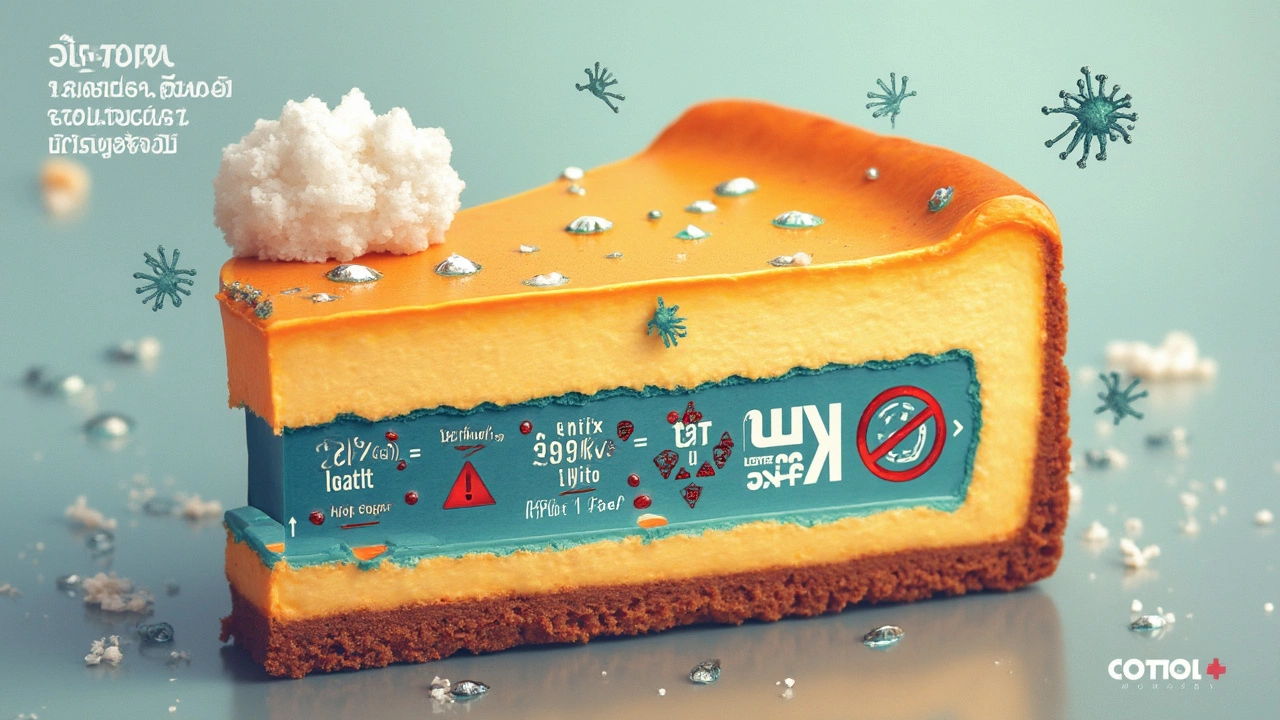
When Cheesecake is Past Its Prime: How to Spot Trouble
Some desserts age gracefully. Cheesecake is not one of them. Texture, flavour, and appearance can all shift as it starts to go off, and guessing wrong can mean an upset stomach—or worse. Start with your nose. If it smells sour, yeasty, or just ‘off’—that’s a deal-breaker.
Texture changes are another giveaway. Is your cheesecake dry around the edges, wet and slimy on top, or cracking at the surface? Has it wept liquid into the pan or picked up a weirdly rubbery texture? Fresh cheesecake should be creamy, smooth, and soft. Dramatic shifts mean it’s time to let go.
Mold is a no-brainer, but don’t forget about subtle signs like discolouration (yellow or brown patches), pooling liquid, or a dull, sad appearance that wasn’t there before. If you see condensation on the inside of the packaging, it’s speeding up the spoilage process. Never rely on a ‘sell by’ date alone—use your senses and your gut feeling. A lot of people in Brighton, where I live, love to buy reduced desserts at closing, but unless you’re eating it the same night, skip it. Saving a few quid isn’t worth the health risk if it’s past its best.
Storing well is half the battle. Keep cheesecake tightly covered in the fridge and away from pungent foods (it’ll absorb odours and taste like onions or curry in no time). If you want to keep it longer, freeze it in slices, separated with parchment paper. Thaw slices in the fridge overnight, not at room temperature. Freezing change its texture a bit—it might be a little grainier, but it’s safer.
- Don’t cut cheesecake in advance—exposing more surface area makes it spoil faster.
- Avoid storing with whipped cream or fresh fruit—add those at serving time.
- Store-bought cheesecakes last a few days longer due to preservatives, but always double-check for off signs.
The myth: ‘If it looks fine, it’s fine.’ The reality: Spoilage bacteria aren’t always visible or smelly, but most problems announce themselves if you’re paying attention.
Better Choices: Healthier Alternatives & When to Eat Cheesecake Without Guilt
Sometimes, you just want a slice. So how do you enjoy cheesecake without panic or guilt? The obvious option—moderation. Plan for it, savour it, and don’t make it a regular habit if you have any health risks. If you’re craving cheesecake but worried about calories, look into recipes with swapped-out ingredients: Greek yoghurt for cream cheese, reduced sugar, egg whites instead of whole eggs, or nut-based crusts. These tricks can shave hundreds of calories off a slice and keep flavour close to the real thing.
Dairy-free, vegan, and keto cheesecakes are everywhere these days—Brighton’s cafes are full of them. Alternative recipes often use coconut milk, cashews, tofu, or oat-based ‘cream cheese’. While some of these are still calorie bombs, they can suit people avoiding lactose, gluten, or animal products. Always check the label—‘vegan’ doesn’t automatically mean healthy, and some brands pile in extra sugar to soften the texture.
If you’re headed to a gathering, ask for the cheesecake to be sliced on demand if possible, and skip on leftovers if you’re not sure about their history. For birthdays or holidays, slice small and enjoy alongside berries for a lighter touch.
Don’t eat cheesecake if you suspect it’s been out too long, if you have a relevant allergy or intolerance, or if your doctor or dietitian says to avoid fatty or sugary desserts. For everyone else, keep it as a treat, eat it fresh, and trust your senses.
Cheesecake isn’t evil—it just requires respect. It’s all about smart choices, respecting food safety, and knowing your own limits. The joy of eating is about more than just the moment—you want to feel good after dessert too. Make that slice count, and when in doubt, there’s always toast and jam (less risk, and just as British!).

